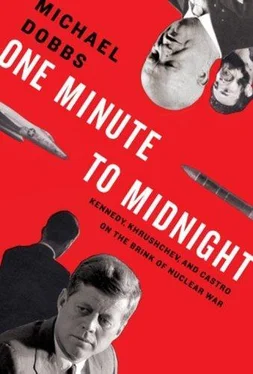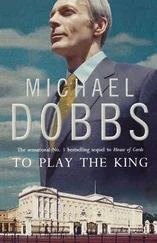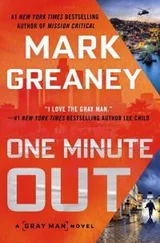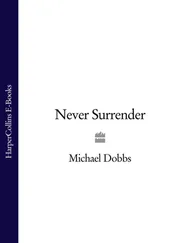A dispatch from Ambassador Dobrynin: CWIHP, 8-9 (Winter 1996-97), 287.
a proximity fuse: Alexander Feklisov, The Man Behind the Rosenbergs (New York: Enigma Books, 2001), 127.
“what we would call”: NK1, 372.
“He sure as hell”: Warren Rogers interview in Tulanian (Spring 1998).
“to finish with Castro”: Author’s interview with embassy counselor Georgi Kornienko, July 2004; KGB report to Moscow, SVR; Fursenko and Naftali, One Hell of a Gamble, 261.
It was the tip: Dobrynin telegram, October 25, 1962, LCV; Fursenko and Naftali, One Hell of a Gamble, 259-62.
“Stop the conveyor”: Article in Hoy Dominical [Havana], November 18, 1962; CIA report, August 29, 1962, Mongoose memo, JFKARC.
Coffee could see rows and rows: Author’s interview with Lt. Gerald Coffee, December 2005; his mission number was Blue Moon 5012.
“alertness in a rapidly”: Undated letter to Coffee from Marine Corps Cdr. David Shoup.
The overflight of the Crusader: Gribkov et al., U KrayaYadernoi Bezdni, 253-60.
Kovalenko controlled two Luna launchers: Malinovsky memorandum, September 6, 1962, LCV, trans. in CWIHP, 11 (Winter 1998), 259. Together with the launchers, each regiment controlled four nuclear Luna missiles and eight conventional missiles.
His most recent report: Author’s interview with Carlos Pasqual, January 2006. CIA Operation Mongoose memo from Richard Helms, December 7, 1962, JFKARC.
As they sorted through: Richard Lehman, “CIA Handling of Soviet Build-up in Cuba,” November 14, 1962, CREST.
had “come to view”: Ibid.
“the establishment on Cuban soil”: NIE 85-3-62, “The Military Buildup in Cuba,” September 19, 1962, CREST.
“large intercontinental rockets”: CIA inspector general report on handling of Cuban intelligence information, November 22, 1962, 19, 31, available through CREST. The report was disseminated by CIA on October 2, with the dismissive headquarters comment. The Poltava docked in Mariel on September 16 with eight R-12 missiles on board, according to RSVN documents inspected by Karlov.
“giant missiles”: Marchant dispatch, November 10, 1962, NSAW Cuba; also published in British Archives on the Cuban Missile Crisis, 1962.
a “wide, unpaved”: Report by M. B. Collins, November 3, 1962, British Archives on Cuba, Cuba Under Castro, Vol. 5: 1962 (London: Archival Publications, 2003), 155.
The vaults were hot and humid: Reminiscences of Rafael Zakirov, former FKR nuclear control officer, V. I. Yesin, ed., Strategicheskaya Operatsiya Anadyr’, 1st ed. (1999), 179-85. See also Zakirov, October 2007 article.
The Soviet trailer-launched missiles: Malinovsky memo, May 24, 1962, LCV, trans. in CWIHP, 11 (Winter 1998), 254.
“to deliver a blow”: Malinovsky order to Pliyev, September 8, 1962, LCV, in ibid., 260.
a “liberated zone”: Author’s visit to Mayari Arriba, March 2006.
Raul understood immediately: Yazov, 157; see also Gribkov et al., U Kraya Yadernoi Bezdni, 119.
The Soviet officer responsible: Gribkov et al., U Kraya Yadernoi Bezdni, 90, 302-3.
Soon after arriving in Oriente: Cuba under Castro, Vol. 5, 152.
Everything was in place: Svetlana Chervonnaya interview with Sgt. Vitaly Roshva, May 2006; Gribkov et al., U Kraya Yadernoi Bezdni, 87-8.
Raul received regular intelligence: Blight and Welch, eds., Intelligence and the Cuban Missile Crisis, 102.
They took elaborate precautions: Zakirov, October 2007 article.
Known to the Marines: “Guantanamo Bay Compared to Attack-Ready Suburbia,” Washington Evening Star, November 14, 1962.
By nightfall, 2,810 dependents: CINCLANT history, chap. VII. Evacuation details from Cuba Fact Sheet, October 27, 1962, NSAW.
But nearly half the 2,400: Gitmo situation report No. 15 250100Z, CNO Cuba, USNHC.
a series of yellow, green, and red: AP report from Guantanamo in Chicago Tribune, November 13, 1962.
At first, Adlai Stevenson: George Plimpton OH, JFKL.
Stevenson was humiliated: Porter McKeever, Adlai Stevenson: His Life and Legacy (New York: William Morrow, 1989), 488.
“What year is this?”: Arkady Shevchenko, Breaking with Moscow (New York: Knopf, 1985), 114.
“Missile,” he wrote: Presidential doodles file, JFKL.
“Terrific”: O’Donnell and Powers, 334.
The nightwatchman: Scott D. Sagan, The Limits of Safety (Princeton, NJ: Princeton University Press, 1995), 99; NORAD Combat Operations Center logs, October 26, 1962, Sagan Collection, NSA.
Nobody knew what to make of: E-mail message to the author from Jim Artman, former F-106 pilot, Duluth.
“discretion was”: ADC Historical Study No. 16, 212-14.
At Williams Air Force: Ibid., 121, 129.
The order to flush: Historical Resume of 1st Fighter Wing Operations During Cuban Crisis, December 13, 1962, AFHRA; e-mail correspondence with Dan Barry, former F-106 pilot, Selfridge AFB.
They eventually concluded: NORAD log, NSA.
“brainwash” the press: Handwritten note from Maj. Gen. Chester Clifton, October 22, 1962, JFKL.
it would be “nice”: The suggestion was made by Vice Adm. Wallace Beakley, deputy commander of the Atlantic Fleet—Diary of Vice Adm. Alfred Ward, commander Task Force 136, USNHC. See also deck logs for Pierce and Kennedy, NARA.
“friendly gestures”: Message 251800Z from COMSECONDFLT, CNO Cuba, USNHC.
labeled “scientific instruments”: Personal notes of Lt. Cdr. Reynolds, Battleship Cove Naval Museum. The Kennedy is now on permanent display in Fall River, MA.
The streets around: Brugioni, Eyeball to Eyeball, 190-2.
The overnight intelligence haul: Photo Interpretation Report, NPIC/R-1047/62, October 25, 1962, CREST.
were “fully operational”: Supplement 6, Joint Evaluation of Soviet Missile Threat in Cuba, October 26, 1962, CREST; Brugioni, Eyeball to Eyeball, 436-7. For information provided by Penkovsky, see Jerrold L. Schecter and Peter S. Deriabin, The Spy Who Saved the World (New York: Charles Scribner’s Sons, 1992), 334-46. The Penkovsky materials were labeled IRONBARK and CHICK ADEE, and mentioned in the October 19, 1962, Joint Evaluation, CREST.
“a fear or stampede”: Brugioni, Eyeball to Eyeball, 437.
He liked to boast: Arthur Lundahl OH, July 1, 1981, Columbia University Oral History Research Office.
In October 1962 alone: Photo Interpretation Report, October 1962, CREST.
Cratology scored its greatest triumph: Thaxter L. Goodall, “Cratology Pays Off,” Studies in Intelligence (Fall 1964), CREST. The ship was the Kasimov, photographed on September 28.
“The hot morning sun”: Brugioni, Eyeball to Eyeball, 195-6.
B-36 was sighted: Chronology of Submarine Contacts, C-20, CNO Cuba, USNHC. See also Summary of Soviet Submarine Activity 272016Z, also in Electronic Briefing Book 75, NSAW.
More than eight hundred contacts: SOSUS activity in Atlantic, CTG 81.1 message 261645Z, USNHC; Electronic Briefing Book 75, NSAW.
“a reliable contact”: Summary of Soviet Submarine Activity, 272016Z.
Lieutenant Anatoly Andreev: Andreev diary provided by Svetlana Savranskaya, NSAW. Portions of the diary were published in Krasnaya Zvezda, October 11, 2000.
B-36 reached the approaches: Dubivko memoir, “In the Depths of the Sargasso Sea,” in Gribkov et al., U Kraya Yadernoi Bezdni, 314-30, trans. Svetlana Savranskaya, NSAW.
he was instructed: Memoirs of Capt. Vitaly Agafonov, commander of submarine flotilla, in Yesin et al., Strategicheskaya Operatsiya Anadyr’, 123.
Читать дальше












